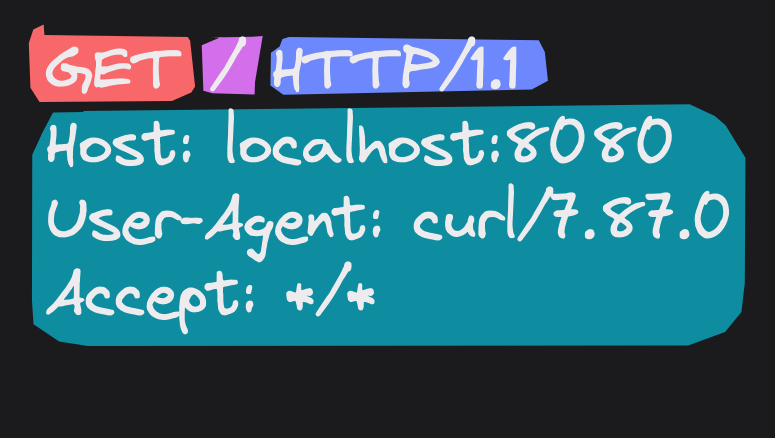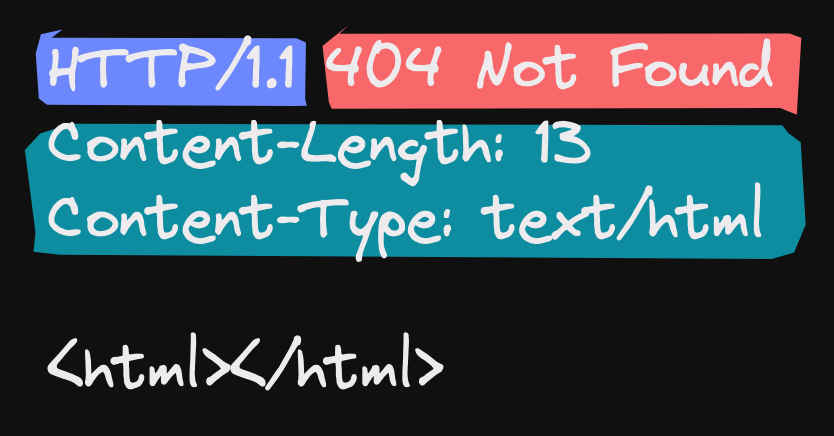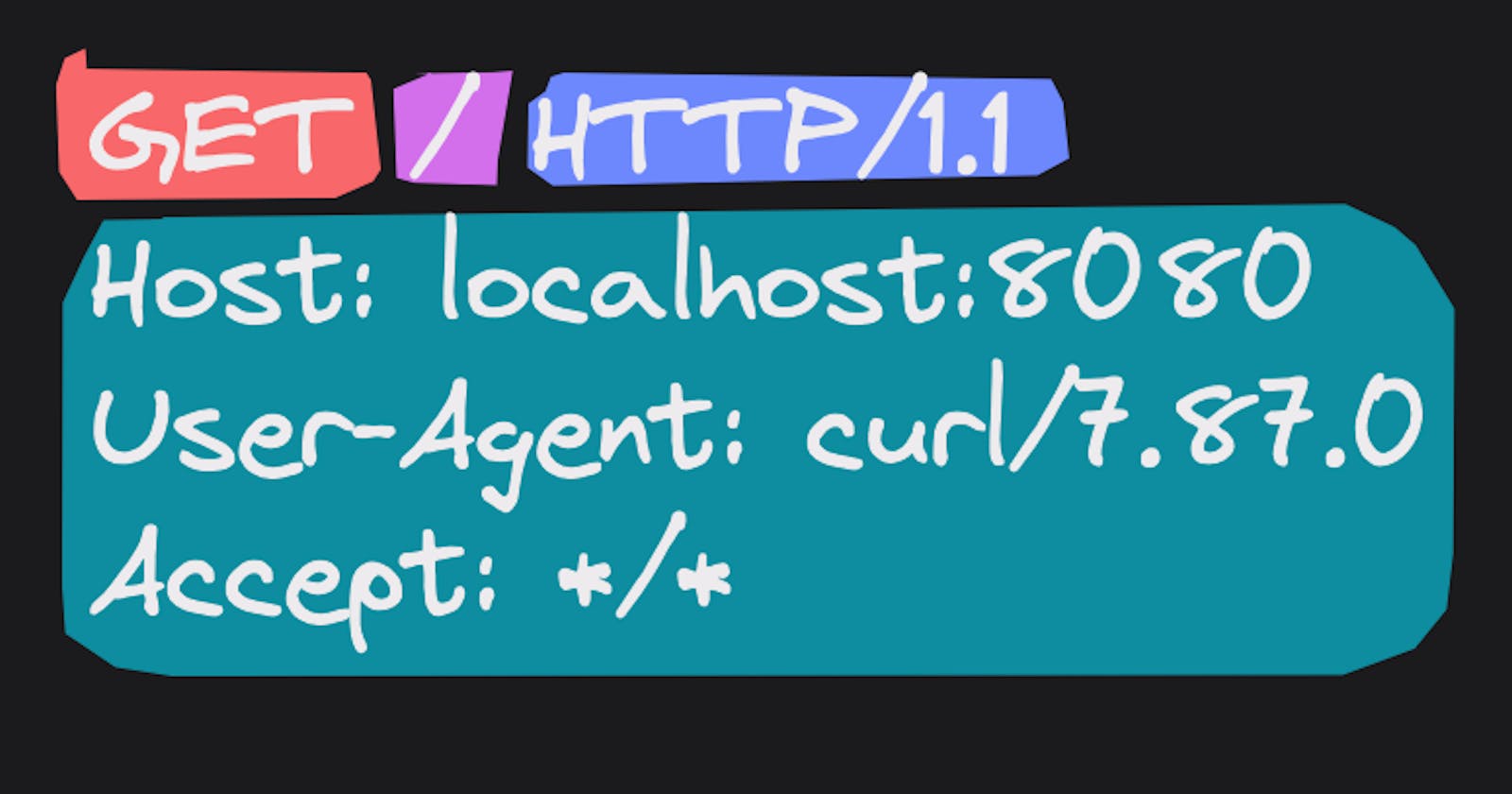Build a web server with Rust and tokio - Part 0: the simplest possible GET handler
Welcome to this series of blog posts where we will be exploring how to build a web server from scratch using the Rust programming language. We will be taking a hands-on approach, maximizing our learning experience by using as few dependencies as possible and implementing as much logic as we can. This will enable us to understand the inner workings of a web server and the underlying protocols that it uses.
By the end of this tutorial, you will have a solid understanding of how to build a web server from scratch using Rust and the tokio library. So, let's dive in and get started on our journey!
In this first part, we'll be building a barebones web server that can only anwser GET requests with a static Not Found response. This will give us a good starting point to build upon in the following tutorial.
Setting up our project
First, we need to create a new Rust project. We'll use the following crates:
tokio: async runtime
anyhow: easy error handling
maplit: macro for creating HashMaps
tracing: structured logging
tracing-subscriber: instrumentation
cargo new webserver
cargo add tokio --features full
cargo add anyhow maplit tracing tracing-subscriber
Anatomy of a simple GET request
In order to actually see what a GET request looks like, we'll set up a simple server listening on port 8080 that will print the incoming requests to the console. This can be done with netcat:
nc -l 8080
Now, if we open a new terminal and use curl send a simple GET request to our server, we should see the following output:

Let's break down the request parts:
the method: indicates the action to be performed on the resource. In this case, we are performing a GET request, which means we want to retrieve the resource
the path: uniquely identifies the resource. In this case, we are requesting the root path
/the protocol: the protocol version. At this stage, we will always asume HTTP/1.1
the headers: a set of key-value pairs that provide additional information about the request. Our request contains the
Hostheader, which indicates the host name of the server, theUser-Agentheader, which describes the client software that is making the request and theAcceptheader, which indicates the media types that are acceptable for the response. We'll go into more details about headers in a later tutorial
We'll use the following struct to represent requests in our code:
// req.rs
#[derive(Debug, Clone, Eq, PartialEq)]
pub struct Request {
pub method: Method,
pub path: String,
pub headers: HashMap<String, String>,
}
#[derive(Debug, Copy, Clone, Eq, PartialEq, Hash)]
pub enum Method {
Get,
}
Parsing the request is just a matter of splitting the request string into lines. The first line contains the method, path and protocol separated by spaces. The following lines contain the headers, followed by an empty line.
// req.rs
use std::{collections::HashMap, hash::Hash};
use tokio::io::{AsyncBufRead, AsyncBufReadExt};
// [...]
impl TryFrom<&str> for Method {
type Error = anyhow::Error;
fn try_from(value: &str) -> Result<Self, Self::Error> {
match value {
"GET" => Ok(Method::Get),
m => Err(anyhow::anyhow!("unsupported method: {m}")),
}
}
}
pub async fn parse_request(mut stream: impl AsyncBufRead + Unpin) -> anyhow::Result<Request> {
let mut line_buffer = String::new();
stream.read_line(&mut line_buffer).await?;
let mut parts = line_buffer.split_whitespace();
let method: Method = parts
.next()
.ok_or(anyhow::anyhow!("missing method"))
.and_then(TryInto::try_into)?;
let path: String = parts
.next()
.ok_or(anyhow::anyhow!("missing path"))
.map(Into::into)?;
let mut headers = HashMap::new();
loop {
line_buffer.clear();
stream.read_line(&mut line_buffer).await?;
if line_buffer.is_empty() || line_buffer == "\n" || line_buffer == "\r\n" {
break;
}
let mut comps = line_buffer.split(":");
let key = comps.next().ok_or(anyhow::anyhow!("missing header name"))?;
let value = comps
.next()
.ok_or(anyhow::anyhow!("missing header value"))?
.trim();
headers.insert(key.to_string(), value.to_string());
}
Ok(Request {
method,
path,
headers,
})
}
Accepting connections
Now that we know how to parse a request, we can start accepting connections. Each time a new connection is established, we'll spawn a new task to handle it in order to keep the main thread free to accept new connections.
// main.rs
use tokio::{io::BufStream, net::TcpListener};
use tracing::info;
mod req;
static DEFAULT_PORT: &str = "8080";
#[tokio::main]
async fn main() -> anyhow::Result<()> {
// Initialize the default tracing subscriber.
tracing_subscriber::fmt::init();
let port: u16 = std::env::args()
.nth(1)
.unwrap_or_else(|| DEFAULT_PORT.to_string())
.parse()?;
let listener = TcpListener::bind(format!("0.0.0.0:{port}")).await.unwrap();
info!("listening on: {}", listener.local_addr()?);
loop {
let (stream, addr) = listener.accept().await?;
let mut stream = BufStream::new(stream);
// do not block the main thread, spawn a new task
tokio::spawn(async move {
info!(?addr, "new connection");
match req::parse_request(&mut stream).await {
Ok(req) => info!(?req, "incoming request"),
Err(e) => {
info!(?e, "failed to parse request");
}
}
});
}
}
We can now run our server on port 8081with the following command: cargo run -- 8081. Sending a GET request to localhost:8081 should print the following output:
INFO http_server: listening on: 0.0.0.0:8081
INFO http_server: new connection addr=127.0.0.1:49351
INFO http_server: incoming request req=Request { method: Get, path: "/", headers: {"Host": "localhost", "User-Agent": "curl/7.87.0", "Accept": "*/*"} }
Sending a response
At this stage, we'll answer every request with a static Not found page. Our response will have the following format:

Let's explore the different parts of the response:
the status line: contains the protocol version, the status code and a human-readable status message
the response headers: encoded in the same way as for the request. Our response contains the
Content-Lengthheader, which specified the length of the response body, and theContent-Typeheader, which indicates that the response body is encoded in HTML. The headers are followed by an empty line.the response body: contains the actual data that will be displayed in the browser. We used an empty HTML document for brevity
We'll use the following struct to represent responses in our code:
// resp.rs
use tokio::io::{AsyncRead, AsyncWrite, AsyncWriteExt};
#[derive(Debug, Clone)]
pub struct Response<S: AsyncRead + Unpin> {
pub status: Status,
pub headers: HashMap<String, String>,
pub data: S,
}
#[derive(Debug, Copy, Clone, Eq, PartialEq, Hash)]
pub enum Status {
NotFound,
}
impl Display for Status {
fn fmt(&self, f: &mut Formatter<'_>) -> std::fmt::Result {
match self {
Status::NotFound => write!(f, "404 Not Found"),
}
}
}
The data field is generic over the type of the response body to account for future use cases where we might want to send a stream of data.
Creating a response from an HTML string is straight forward:
// resp.rs
use std::io::Cursor;
use maplit::hashmap;
// [..]
impl Response<Cursor<Vec<u8>>> {
pub fn from_html(status: Status, data: impl ToString) -> Self {
let bytes = data.to_string().into_bytes();
let headers = hashmap! {
"Content-Type".to_string() => "text/html".to_string(),
"Content-Length".to_string() => bytes.len().to_string(),
};
Self {
status,
headers,
data: Cursor::new(bytes),
}
}
}
Sending a response is a bit more involved. We'll use the AsyncWrite trait to write the response to a generic output stream.
// resp.rs
use std::{
collections::HashMap,
fmt::{Display, Formatter},
io::Cursor,
};
use maplit::hashmap;
use tokio::io::{AsyncRead, AsyncWrite, AsyncWriteExt};
// [...]
impl<S: AsyncRead + Unpin> Response<S> {
pub fn status_and_headers(&self) -> String {
let headers = self
.headers
.iter()
.map(|(k, v)| format!("{}: {}", k, v))
.collect::<Vec<_>>()
.join("\r\n");
format!("HTTP/1.1 {}\r\n{headers}\r\n\r\n", self.status)
}
pub async fn write<O: AsyncWrite + Unpin>(mut self, stream: &mut O) -> anyhow::Result<()> {
stream
.write_all(self.status_and_headers().as_bytes())
.await?;
tokio::io::copy(&mut self.data, stream).await?;
Ok(())
}
}
impl Display for Status {
fn fmt(&self, f: &mut Formatter<'_>) -> std::fmt::Result {
match self {
Status::NotFound => write!(f, "404 Not Found"),
}
}
}
Puting it all together
We'll use the following document as our 404 page:
<!-- static/404.html -->
<!DOCTYPE html>
<html lang="en">
<head>
<title>Page Not Found</title>
<style>
body {
background-color: #f8f8f8;
font-family: Arial, sans-serif;
font-size: 16px;
color: #333;
}
.container {
max-width: 600px;
margin: 0 auto;
padding: 40px 20px;
text-align: center;
border: 1px solid #ddd;
border-radius: 5px;
background-color: #fff;
box-shadow: 0 2px 4px rgba(0,0,0,0.1);
}
h1 {
font-size: 48px;
margin-bottom: 20px;
color: #333;
}
p {
font-size: 24px;
margin-bottom: 40px;
}
</style>
</head>
<body>
<div class="container">
<h1>404</h1>
<p>The page you are looking for could not be found.</p>
</div>
</body>
</html>
We can now use our Response struct to send a Not found page to the client when we receive a request:
// main.rs
// [...]
let resp = resp::Response::from_html(
resp::Status::NotFound,
include_str!("../static/404.html"),
);
resp.write(&mut stream).await.unwrap();
// [...]
Navigating to localhost:8081 should now display our Not found page.
That's a good start, but we're still far from a fully functional web server. In the next part, we'll add support for serving static files. You can find the code for this part here.
Looking for a Rust dev? Let's get in touch!

